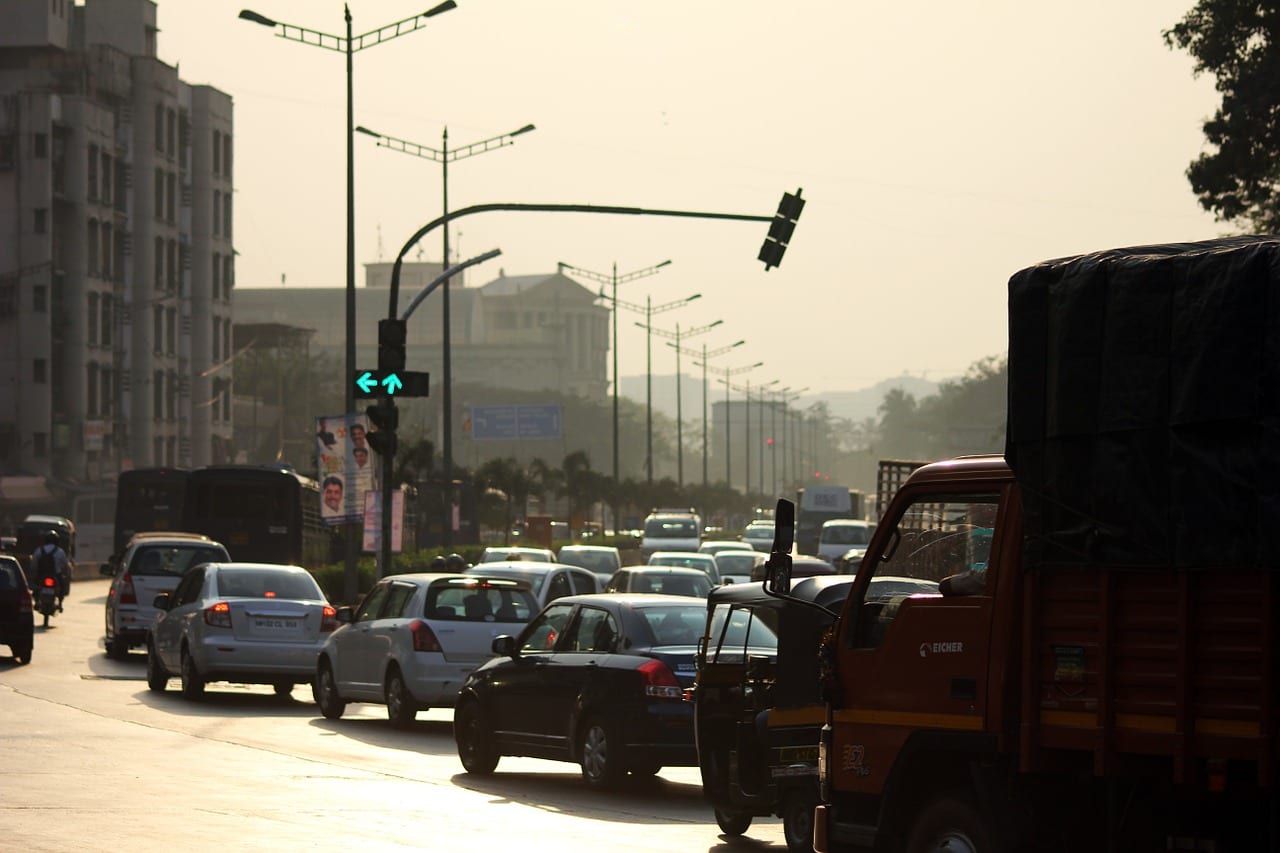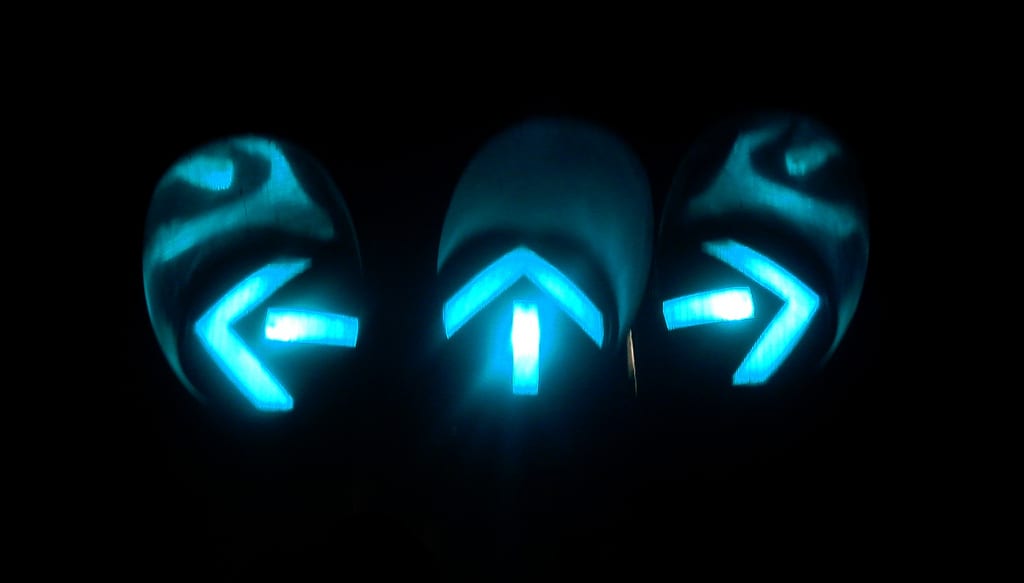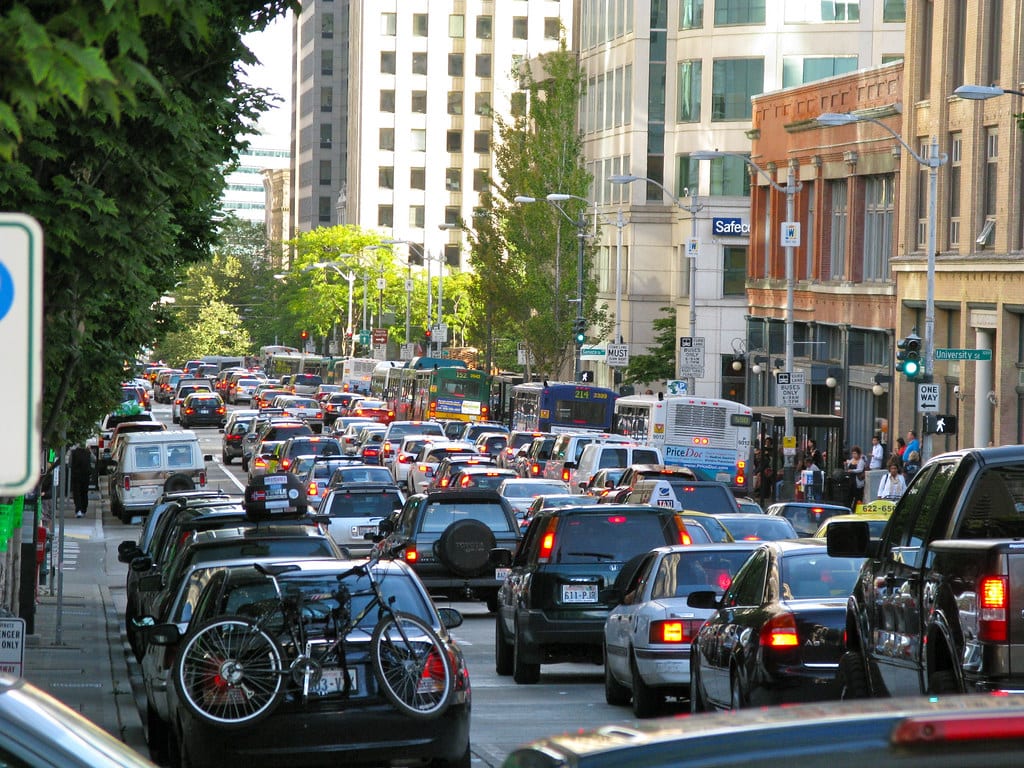Gridlock is the worst, isn’t it? You’ve already sat though one light cycle, and with this long line of cars also waiting to get through, it looks like you may be sitting through another one. But although it’s tempting to ride the guy’s bumper in front of you through the light, science says that won’t help you at all.
Tailgating is never a good idea. But when you’re desperate to make it through a red light, doesn’t it make sense to minimize the space between you and the next car?
With all the collisions that happen at intersections, researchers from Duke University and Virginia Tech wanted to put the desire to squeeze through a traffic light on someone else’s tail to the test. Their study, which wound up showing some surprising results, was published in the Journal of Physics in November of 2017.
For the test, researchers had volunteers sit in 10 Chevrolet Impalas lined up at a red traffic light on a test road. The cars were at varying distances from each other. When the light turned green, drivers were told to accelerate at a “normal and comfortable fashion.” Meanwhile, a drone recorded their speeds.
When researchers analyzed the film, they found the tailgating cars took as long to get through the light as the cars stopped up to 25 feet behind the car in front. How does that work?
To explain, the researchers compared the findings to melting ice. The extra energy, or “latent heat,” it takes to get ice to begin melting is like the amount of time it takes a car to accelerate from a full stop. Cars close to the bumper of the car in front of them have to wait until the entire line of cars begins to melt to accelerate safely.
In the words of the researchers, “the ‘temperature’ (kinetic energy) of the vehicles cannot increase until the traffic ‘melts’ into the liquid phase.”
Which means that it takes more time for a tailgater to accelerate, while a driver who stops further back can accelerate faster – and they both wind up moving at the same pace.
Who knew? So stop tailgating and enjoy the ride. We’ll all get to where we’re going eventually.
The post Tailgating the Car Ahead of You Through Endless Lights Won’t Help You at All appeared first on UberFacts.






